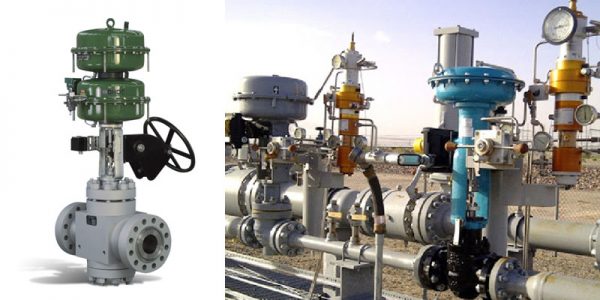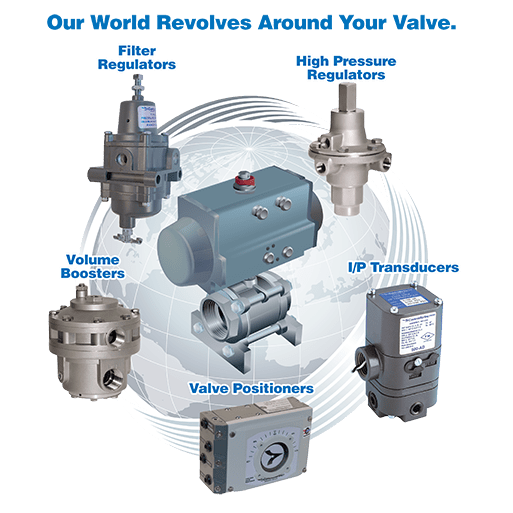The Role of Control Valves in Fluid Flow Management Systems
The Role of Control Valves in Fluid Flow Management Systems
Blog Article

Maximize Energy Cost Savings and Comfort With Advanced Structure Automation Controls
In the realm of modern-day style and center management, the assimilation of sophisticated building automation manages stands as a pivotal innovation. By utilizing the power of automation, buildings can adapt, react, and advance in ways that were when unimaginable.
Power Efficiency Advantages
Power performance benefits can substantially reduce energy usage and functional prices in buildings. By carrying out energy-efficient techniques and technologies, building owners and operators can attain substantial savings while also adding to ecological sustainability. Among the primary advantages of enhancing energy effectiveness in structures is the decrease of energy costs. Energy-efficient systems, such as innovative structure automation controls, can optimize using resources like illumination, home heating, and air conditioning, resulting in lower energy expenses in time.
Moreover, boosted energy efficiency can extend the life expectancy of structure tools and systems. By operating extra successfully, HVAC systems, lighting fixture, and various other building elements experience less damage, causing decreased upkeep and replacement prices. Furthermore, energy-efficient structures typically command higher residential property values and rental rates, giving long-lasting economic benefits to owners.
Furthermore, power effectiveness can improve passenger comfort and productivity. Effectively managed indoor settings with optimal lights and thermal conditions develop an even more helpful and enjoyable work space, leading to enhanced staff member fulfillment and performance. Generally, the power efficiency benefits connected with sophisticated structure automation controls are complex, encompassing expense savings, environmental stewardship, and owner well-being.
Improved Comfort Control
Enhancing convenience control in structure atmospheres needs an innovative assimilation of sophisticated automation systems for optimal occupant health. By utilizing advanced structure automation controls, centers can tailor the interior setting to fulfill the certain requirements and preferences of owners. control valves.
Boosted convenience control exceeds basic temperature level modifications. It includes features such as personalized setups, tenancy sensing units, and all-natural light utilization to develop a vibrant and receptive environment. By integrating these advanced controls, buildings can not just improve convenience yet likewise improve power performance by optimizing system procedures based on real tenancy and use patterns. Ultimately, focusing on occupant convenience through innovative automation systems brings about a more delightful and healthier interior atmosphere.
Functional Efficiency Improvements

Moreover, the application of real-time monitoring and analytics tools enables structure operators to identify energy inadequacies and functional abnormalities quickly. By constantly keeping track of power use patterns and system performance metrics, modifications can be made in real-time to maximize energy consumption and make sure peak operational performance. control valves. Additionally, integrating need feedback strategies into structure automation controls can further improve functional effectiveness by dynamically changing power usage based on grid conditions and prices signals
Indoor Environment Optimization
Efficient indoor climate optimization is an essential facet of building automation controls, ensuring occupants' comfort and wellness while optimizing power cost savings. By making use of advanced sensors and controls, building automation systems can continuously readjust and monitor temperature, moisture degrees, air top quality, and ventilation to create an optimal indoor environment. Maintaining comfortable and constant conditions not only enhances occupant contentment yet Website additionally enhances performance and general wellness.
Indoor climate optimization also plays an essential role in power performance. By fine-tuning air flow, cooling, and home heating systems based upon real-time data and tenancy patterns, building automation controls can significantly lower energy consumption - control valves. For example, implementing techniques such as demand-controlled air flow and thermal zoning can assist minimize power waste while ensuring that each area of the building gets the required conditioning.

Sustainable Atmosphere Development
Building automation controls not just maximize interior environment problems for power effectiveness and passenger comfort however additionally lay the structure for developing a sustainable setting with tactical administration of resources and systems. By integrating innovative structure automation modern technologies, such as sensors, actuators, and intelligent software, centers can keep an eye on and change power use in real-time to reduce waste and reduce their carbon impact. These systems allow predictive upkeep, determining potential concerns prior to they escalate and maximizing devices performance to boost long life and effectiveness.
Furthermore, lasting atmosphere creation prolongs past power administration to encompass water preservation, waste reduction, and indoor air quality renovation. Structure automation controls can regulate water usage, spot leakages, and guarantee correct garbage disposal practices, adding to overall sustainability initiatives. Additionally, by managing and monitoring ventilation and purification systems, these innovations boost occupant wellness and productivity while reducing power consumption related to HVAC procedures.
Conclusion
Finally, progressed building automation manages deal substantial benefits in regards to power savings, comfort control, functional performance, indoor environment optimization, and developing a lasting environment. By executing these controls, structures can attain optimal performance while lowering power intake and improving resident comfort. It appears that making use of why not find out more innovative automation modern technology is essential in improving building efficiency and developing a more sustainable future.
Energy efficiency benefits can considerably minimize power intake and functional prices in structures. Generally, the power efficiency benefits associated with advanced building automation controls are multifaceted, incorporating cost savings, ecological stewardship, and owner health.
Additionally, integrating need action methods right into structure automation controls can better boost functional Your Domain Name effectiveness by dynamically adjusting power usage based on grid problems and rates signals.
Building automation controls not just optimize interior climate conditions for energy performance and resident convenience however also lay the structure for creating a lasting environment via calculated management of sources and systems.In conclusion, progressed building automation regulates offer substantial benefits in terms of energy savings, convenience control, operational effectiveness, indoor environment optimization, and creating a sustainable setting.
Report this page